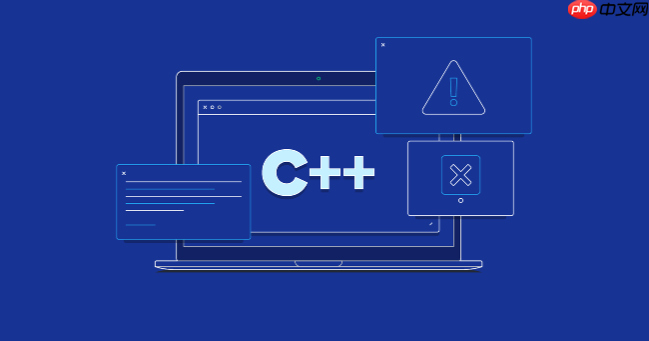PIMPL模式通过将类的实现细节移至源文件中的私有类,并在头文件中仅保留指向其实例的指针,实现接口与实现分离。它隐藏了私有成员和类型,减少了头文件依赖,使修改实现时不需重新编译使用方,提升了编译速度与封装性。现代C++中常结合std::unique_ptr管理实现对象,支持移动语义并避免内存泄漏,但需在cpp文件中定义析构函数以满足完整类型要求。该模式适用于大型项目或库开发,能增强二进制兼容性,但引入间接访问开销和堆分配成本,不适合轻量级类。

在C++开发中,PIMPL(Pointer to IMPLementation)是一种常用的编程技巧,用于隐藏类的实现细节并减少编译依赖。它通过将私有成员从头文件移至源文件,有效降低模块间的耦合,加快编译速度。
PIMPL模式的核心思想是:把一个类的实现细节封装到一个独立的、不透明的结构体或类中,并在主类中只保留一个指向该实现的指针。这样,头文件中不再暴露具体的成员变量或私有类型,外部代码无法感知其内部结构变化。
典型实现方式如下:
// widget.h
class Widget {
public:
Widget();
~Widget();
Widget(const Widget&);
Widget& operator=(const Widget&);
<pre class='brush:php;toolbar:false;'>void doSomething();private: class Impl; // 前向声明 Impl* pImpl; // 指向实现的指针 };
// widget.cpp
立即学习“C++免费学习笔记(深入)”;
class Widget::Impl { public: void doSomething() { / 具体实现 / } int value = 42; std::string name; };
Widget::Widget() : pImpl(new Impl) {} Widget::~Widget() { delete pImpl; }
void Widget::doSomething() { pImpl->doSomething(); }
PIMPL带来的主要好处集中在接口稳定性和构建效率上:
使用智能指针替代原始指针能更安全地管理资源,同时配合移动语义提升性能。
// widget.h
#include <memory>
<p>class Widget {
public:
Widget();
~Widget(); // 需要定义,不能默认
Widget(Widget&&); // 移动构造
Widget& operator=(Widget&&); // 移动赋值
Widget(const Widget&) = delete;
Widget& operator=(const Widget&) = delete;</p><pre class='brush:php;toolbar:false;'>void doSomething();private: class Impl; std::unique_ptr<Impl> pImpl; };
// widget.cpp Widget::Widget() : pImpl(std::make_unique<Impl>()) {} Widget::~Widget() = default; Widget::Widget(Widget&&) = default; Widget& operator=(Widget&&) = default;
注意:析构函数必须在cpp文件中定义(即使为空),因为unique_ptr需要知道Impl是完整类型。否则会引发编译错误。
PIMPL适合对编译防火墙要求高、频繁变更实现或作为公共库发布的类。
基本上就这些。PIMPL是一个权衡设计清晰性、编译效率与运行性能的技术手段,在大型项目中尤为实用。
以上就是c++++中PIMPL模式的实现和作用_c++隐藏实现细节与优化编译依赖的技巧的详细内容,更多请关注php中文网其它相关文章!

c++怎么学习?c++怎么入门?c++在哪学?c++怎么学才快?不用担心,这里为大家提供了c++速学教程(入门到精通),有需要的小伙伴保存下载就能学习啦!

Copyright 2014-2025 https://www.php.cn/ All Rights Reserved | php.cn | 湘ICP备2023035733号